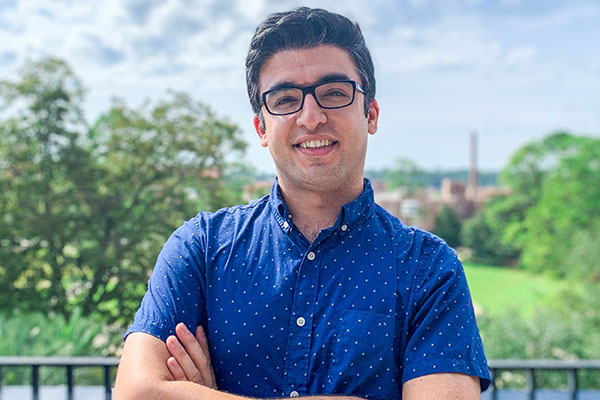Hamidreza Rahmani

"Come for career, stay for science!"
Department: Arts and Sciences
Degree Program: Physics
Degree: Doctorate
Award: AHA Predoctoral Fellowship (2020)
Video Credit: Enrique Toledo and Ignacio Diaz
Why FSU?
I started my journey in physics in high school, focusing on astronomy and astrophysics. While receiving my college education at the University of Tehran, I realized there are more areas of physics that I am excited and curious about. This wide range of interest made it difficult for me to decide what I wanted to pursue in graduate school. In the search for a graduate school, the opportunities to work in the areas of high energy and particle physics (both using local accelerators and in collaboration with other labs like Jefferson Lab and LHC in Europe), astrophysics (in collaboration with large observatories around the globe), biophysics (in Institute of Molecular Biophysics), and the National High Magnetic Field Laboratory at FSU stood out immediately. After starting at FSU, I realized that the graduate program was even more flexible than I expected and that interdisciplinary research is often encouraged. On a side note, I was applying to US institutions from Iran and the exchange rate makes the application fee considerable. FSU was one of the most affordable universities for me.
Motivation to pursue a graduate degree
I was always passionate about understanding nature and the scientific method. As a child, I was impressed by some of the historical monuments in Iran that were built with high precision to predict astronomical phenomena. These monuments include both those that were made with an impressive knowledge of astronomy to be used as solar calendars before the Islamic era and the mosques built to face Mecca with the knowledge of the spherical geometry after the Islamic era. Approaching these questions and learning about the scientific revolution that started with Galileo in high school made it clear for me that I wanted to pursue a degree in science. I always imagined myself as a scholar of the old world, and now I am trying to make new discoveries in my graduate research and contribute to that knowledge.
Importance of your research and work
The focus of our research group is the atomic structure of muscle, specifically Insect Flight Muscle (IFM). On its face it might not look very important, but IFMs are the best models to understand vertebrate muscle, including human muscle and, most important of all, the human heart! Muscle tissues from different species have fundamental similarities highly conserved through evolution. This aspect is what I consider the best part of my research: I get to explore known areas of our knowledge about nature while the results can directly affect human lives in a positive way. Understanding muscle may lead to new treatments and cures for heart diseases like cardiomyopathy.
Briefly describe your career aspirations
My career goal is to become an independent researcher in a university. I am also passionate about teaching and training the next generation of researchers. I enjoy teaching as a graduate student now, and I hope to become a professor in a university in the future.
Advice for anyone considering graduate school.
My advice for people considering graduate school would be to start looking into your interests and target schools before finishing your college degree. Explore your options both in and out of graduate school to make an informed decision. It is not easy to complete a graduate degree, but you should not let the fear of difficulties stop you either.
Accomplishments during your graduate career
I have contributed to two publications: (publication 1) and (publication 2); been nominated for the Outstanding Teaching Assistantship Award (2017); served as president of the Physics Graduate Student Association (2018); FSU 3 Minute Thesis Finalist (2018); and the Richard L. Wilder Endowed Fellowship (2019). In 2020, I received the American Heart Association Predoctoral Fellowship.

